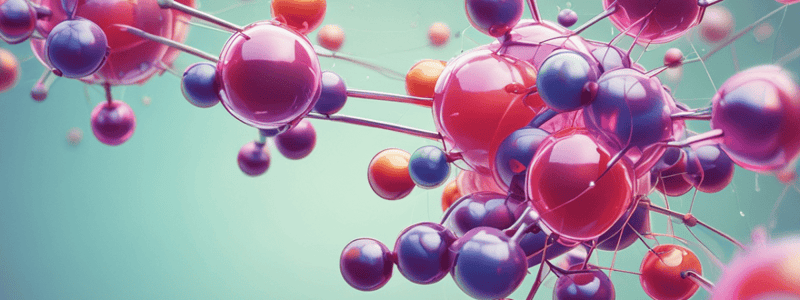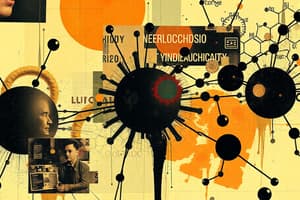Podcast
Questions and Answers
What does polarity of a molecule refer to?
What does polarity of a molecule refer to?
- The classification of molecules based on their size
- The tendency of an atom to attract electrons in a chemical bond
- The arrangement of atoms in a molecule
- The distribution of electric charge around atoms or molecules (correct)
Who introduced the concept of electronegativity?
Who introduced the concept of electronegativity?
- Albert Einstein
- Marie Curie
- Linus Pauling (correct)
- Isaac Newton
In which direction does electronegativity value increase in the periodic table?
In which direction does electronegativity value increase in the periodic table?
- From top to bottom
- Towards the center of the periodic table
- In a zigzag pattern across periods
- From left to right (correct)
What type of bond is formed when the electronegativity difference is between 0.4 and 1.7?
What type of bond is formed when the electronegativity difference is between 0.4 and 1.7?
What characterizes an ionic bond?
What characterizes an ionic bond?
How are nonpolar covalent bonds characterized?
How are nonpolar covalent bonds characterized?
Flashcards are hidden until you start studying
Study Notes
Molecule Classification
- Molecule properties depend on the structure and arrangement of their atoms, leading to varying classification due to structural and geometrical differences.
Polarity
- Refers to the distribution of electric charge around atoms, chemical groups, or molecules.
- Electronegativity is the atom's tendency to attract electrons to itself in a chemical bond, introduced by LINUS PAULING in 1932.
Electronegativity
- Increases in a period from LEFT TO RIGHT and decreases in a group from TOP TO BOTTOM.
- Higher electronegativity values indicate a greater tendency to attract electrons towards itself.
Determining Polarity of Molecules
- Electronegativity difference:
- 0.5-1.7: POLAR COVALENT BOND, unequal sharing of electrons.
- 0.4 or less: NONPOLAR COVALENT BOND, equal sharing of electrons.
- > 1.7: IONIC BOND, transfer of electrons from metal to non-metal, forming oppositely charged particles.
Molecular Bonding
- Molecules are held together by shared electron pairs.
Studying That Suits You
Use AI to generate personalized quizzes and flashcards to suit your learning preferences.




